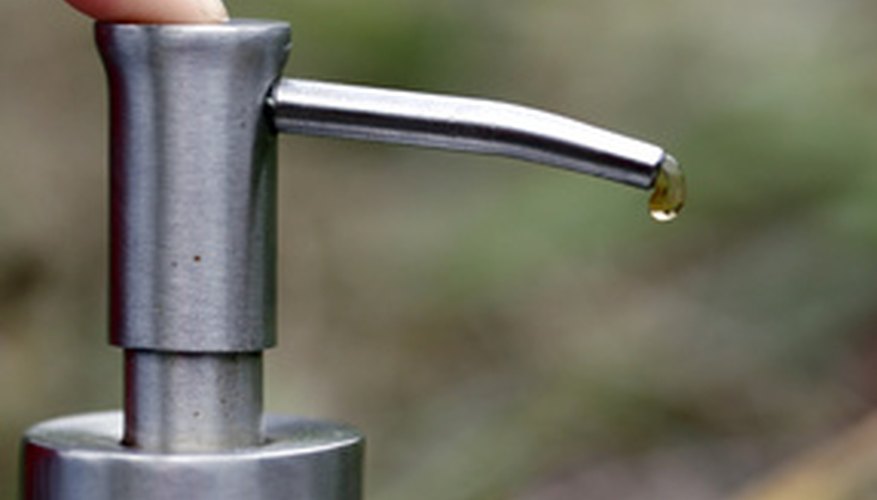A constantly dripping soap dispenser is not only aggravating, it is also unhygienic and potentially harmful to countertops and sinks. Regardless of the type of soap dispenser you have, fixing a leaky dispenser is a fast and simple process requiring items that are already close at hand in the kitchen or bathroom. In less than five minutes you can have a drip-free soap dispenser with no more worry about slippery work surfaces and unsightly pump heads.
- A constantly dripping soap dispenser is not only aggravating, it is also unhygienic and potentially harmful to countertops and sinks.
- In less than five minutes you can have a drip-free soap dispenser with no more worry about slippery work surfaces and unsightly pump heads.
Remove the entire soap pump (including the straw and pump head) from the bottle. Clean any excess soap from the pump and fully submerge it in a bowl of hot water. With your hands and the cotton swabs, remove all traces of soap from inside the pump head, the straw and around the lip where the dispenser joins the bottle. It may be necessary to refill the bowl if the water becomes too soapy.
Check the pump for cracks or chipping, as these are a common cause of drips. Submerge the straw half an inch into the bowl of hot water. With the lip of the dispenser resting between your index and middle fingers, depress the pump head with your thumb until water is ejected. Water escaping anywhere other than the mouth of the pump head indicates that the dispenser is broken and must be replaced.
Thoroughly dry the clean dispenser with a towel before replacing it in the soap bottle.
To prevent future drips, dilute the soap remaining in the bottle by adding one to three tablespoons of water. Drips occur when some soap remains in the pump after the dispensing. Diluting the soap ensures that the soap being pumped out is fully ejected, so it is less likely to drip.
- Check the pump for cracks or chipping, as these are a common cause of drips.
- To prevent future drips, dilute the soap remaining in the bottle by adding one to three tablespoons of water.
TIP
If you are unable to remove dried soap from the dispenser with cotton swabs, try toothpicks. Toothpicks are relatively sharp yet are safe and easy to handle in even the soapiest water. When washing your hands, make sure you are using all the soap that is pumped into the head. Gummy pump heads tend to ooze soap even after you have moved on to another task. Foam soaps tend to drip less than traditional liquid soaps. Disposable foam dispensers are easy to find; however, ceramic or stainless steel ones may be harder to locate.
